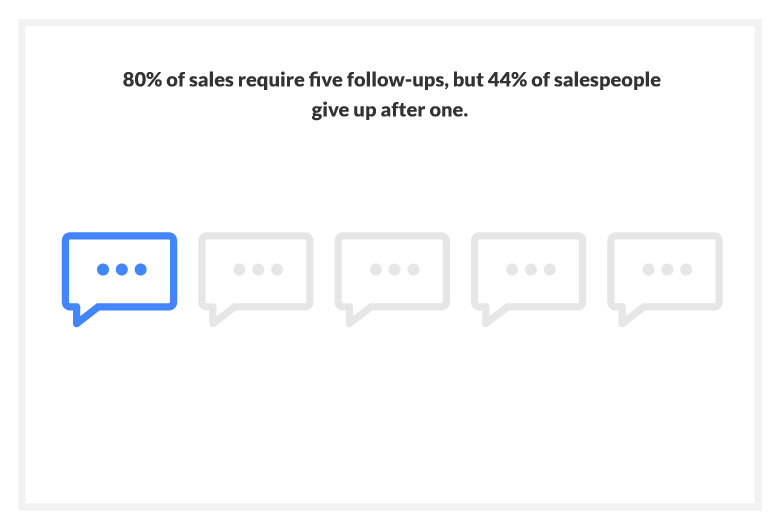Transcript of Making Sales Prospecting Fun and Easy written by John Jantsch read more at Duct Tape Marketing
Back to Podcast
Transcript
This transcript is sponsored by our transcript partner – Rev – Get $10 off your first order

John Jantsch: This episode of the Duct Tape Marketing podcast is brought to you by AXA Equitable Life. That’s AXA.com, advice, retirement, and life insurance.
John Jantsch: Hello, and welcome to another episode of the Duct Tape Marketing podcast. This is John Jantsch, and my guest today is Tom Martin. He’s a speaker and author. In fact, Tom was on when his book, The Invisible Sale, came out. You could go back … In fact, we’ll have that in the show notes. He’s also the founder of Converse Digital, and he’s got a new course that he’s been working on called Turning Conversations Into Customers: The Sales Prospecting Method for People Who Hate Sales Prospecting. Welcome back, Tom.
Tom Martin: Hey. Thanks for having me back, and thanks for saying the name of the company correctly. I think you are one of the few people. Everybody always says it like converse, like the tennis shoes, so thank you for that.
John Jantsch: Well, I do love the tennis shoes, so maybe that’s why I made sure I studied it.
John Jantsch: Let me ask you this, though. Who doesn’t love sales prospecting? I don’t understand if there would be a market for this, even.
Tom Martin: There’s actually, in some of the research I was doing, they recently had a study that came out that 43% of sales people are afraid to make a cold call. I think in general you have people like myself who are introverted or shy who really don’t like the idea of prospecting. Maybe not so much they don’t like it, but it’s really uncomfortable. They really have a hard time at a conference or a trade show or a networking event just walking up to someone, sticking their hand out, and saying “Hi, I’m Tom Martin,” and starting a conversation. They tend to be the person that’s got way too much email to do on their mobile phone at the side of the room like an eighth grade dance.
John Jantsch: In case it wasn’t obvious, I was being facetious. I don’t know anybody who likes prospecting, to tell you the truth.
Tom Martin: I don’t know, I’ve seen you prospect, I’ve seen it in action. (sarcastically)
John Jantsch: A lot of people’s dislike or disdain for it is because of the way they have been prospected, and what we think of as cold calling today. Would you agree?
Tom Martin: Absolutely. This whole course came out of I gave a talk locally recently in New Orleans, and it was one of those where I wasn’t getting paid. I was doing a favor for a friend, and thought it was a perfect time to tryout new material. Basically, I gave an entire talk about just that. People hate prospecting because the way frame this concept of sales prospecting is in a way that’s very selfish, and it’s self serving, and people don’t like that. It’s not what we are taught to do when we’re children.
Tom Martin: If you reframe it, that it’s not only fun and enjoyable and works… I was blown away by the audience reaction after the talk. And I was like, “Okay wait, I think I might be onto something here. I think I might not be the only guy in the world that doesn’t like to do this.” Exploring a lot of these schematics and various talks and blog posts and different things, are implying that people are hungry for, especially entrepreneurs, freelancers, solo printers, people like us, they know they have to prospect for a living. They only eat what they kill, right? They’re really searching and looking for someone to show them a way that is palatable, maybe even enjoyable, versus some seven step process that has them sending out cold, LinkedIn invites right after somebody connects with them – which is everyone’s favorite thing in the world to receive.
John Jantsch: It’s interesting. I think anybody who starts a business, you talked about freelancers and solo printers. I mean, an accountant, a lawyer, they start their business thinking, “This is great. I’ve got my website up. Here we are, I’m in business.” Then come to realize that 50% of this job is selling. I think those people come to the realization kicking and screaming. Then they have to go and figure out how to do it. I think that that, maybe, is sort of the reluctance. It seems like they’ve got to learn this whole new skill. What would you say to those folks in terms of how they should frame this idea of Everybody Sells Something?
Tom Martin: What I try explain to folks is they really don’t need to necessarily learn a new skill. One of the things that have really come into light is this whole concept of social selling. I hate the term because it’s really [inaudible] that people talk about social selling as how do I sell using LinkedIn and Twitter and Facebook, these platforms. It’s a very platform based training, selling theory.
Tom Martin: What I do is talk about is social selling is actually great, but what you have to understand is what social selling means is you sell by being social. And that you know how to do. You know how to be social, you know how to have a conversation with someone to engage them, to try to find some common ground that you both can stand on. From there, you can continue to have a conversation and find things you know about each other that you have in common. That’s how you sell. You create this connection between you and that prospect, then that connection point, maybe not in the first conversation, what you do will come out.
Tom Martin: The basis of your relationship with them is that you formed this connection, this bond if you will, and that gives you something you can build on. Then when they need your service, you’re the top of mind preference. You’re the person they want to call, and they’re pretty sure they want to do business with you as opposed to just do business with somebody. That’s how you prospect. That’s how you build thing flywheel of leads that takes while to get going, but once you get it going the leads just kind of come in because you’re that person people enjoy being around. You’re that sales prospecting they actually welcome into their life versus running, screaming buying technology to avoid etc.
Tom Martin: When you help them see that, a little lightbulb goes on. It could be a little bit more strategic than just talking, but that’s the core. Be social. Be someone people want to talk to.
John Jantsch: I think that’s one of the things that really is the promise of social media. Again, as you said, a lot of people have ruined it, but there’s so much data there. There’s so much information to help you derive a sense of propinquity. Only the second time that word has been used on this podcast, and the first one was when I interviewed you for the invisible sale. It’s getting a long day, I’m tripping on my words. I had that one queued up too.
John Jantsch: Explain that concept. It is what you just said, and I’m surprised you didn’t use the word.
Tom Martin: Nobody can everybody pronounce it, but they love it. It’s a great conversation word. But really, it’s defining how relationship are goaled. It’s really like dating. When you met your wife for the first time, you met her and learned a few things about her you liked, then you had another date. You had more conversations, you found more things you liked. Propinquity is all about that. It’s about making sure there is a connectivity between you and the person you want to do business with. That connectivity might be you in person. It might you as content. It might be you as you’re on a podcast and someone listens it. It might be you social media touching.
Tom Martin: You want to create a proximity between you and your prospect where they can continue to learn new things about you. And that’s the key, they have to always be learning something new about you. Because, what they’re doing is filing all those things away and maybe half the things they find out about they actually like. Eventually Mathematics takes over and they find enough things they like about you they decide, “Yes, this is my preferred provider. Or in a social world, this is a person I want to be friends with.” That’s the way it works in life.
Tom Martin: I think it works the same way in sales and marketing. But you know, the key is you can’t just have that proximity. You’ve got to be present in those moments. That’s probably the biggest thing that trips people up, is that they just can’t be present in the moment while they’re having conversation. Or, while you’re being interviewed on a podcast, be wholly present in having this discussion with the person interviewing you versus thinking about, “Oh I’ve got this other thing going on, I’ve got to do this call later.”
Tom Martin: That part is key. If people can get to that, where they can truly be present in that moment, really focusing on “How can I connect with this individual? What is our common ground? There has to be some common ground.” That’s when the magic can take off, and they can really a) be very successful touching, but b) leave a real conversation, feeling like “Wow that was really fun, I enjoyed that, I really liked that person. I don’t just like them as a prospect, I kind of like them as a person, that was kind of cool.”
Tom Martin: As soon as you can get people to understand that, then they’re won’t mind sales prospecting. Yes, you don’t. You just don’t like it the way you were taught to do it because the way you were taught to do it just feels self serving and selfish. When you were a kid, your mom told you to share your legos, not keep them all to yourself.
John Jantsch: This episode of The Duct Tape Marketing Podcast is brought to you by AXA Equitable Life. It’s time we start giving life insurance the credit it deserves. That’s because life insurance can be so much more than protection for you and your family. It also helps you live, keep, and potentially build more cash value over time. To learn more, go to AXA.com.
John Jantsch: Obviously an essential part of this is what you just said is kind of that proximity, having that common ground. That’s probably not hard for people to get. Are there some consistent, sort of core activities, you have to surround that with so that it does ultimately lead to, “Hey this is a smart person – or a person that can solve my problem?”
Tom Martin: That’s where those of us who are trying to prospect, especially with trying to prospect outside of our local geography, that’s where content can really play a big role – both your own content resident on your own site to the internet or world via podcast, posting on relevant blogs, or third party media platforms, speaking at the right conferences… things of this nature. In that content, at the same time, you have to build the content where you are finding that common ground. You’ve got to build content that someone can read and say, “Oh, this was written for me.” Granted, obviously you didn’t write it for a single person, that wouldn’t scale very well, but it should feel like, “Hey, this was written for me, this person understands my pain point or my frustration, or more girdle.” Like they get me.
Tom Martin: When you can do that. And look, I wish I could say I’m the greatest person in the world at that, I’m not. If I was, I’d be even more successful. But, that is the key. If you can do that, that’s you having that connection with them even before you’ve ever met them. To me, if you can get to that, the sky’s the limit. You’ll always have prospects.
John Jantsch: I wrote a book called Duct Tape Selling, and essentially I was encouraging sales people, and anybody who had to sell, that it really is marketing in a lot of ways. Obviously there are some core belly to belly kind of things that were not included in there, but in terms of how you raised your expertise and became the welcome guest… I went out and spoke on that book quite a bit, and I would have a lot of sales people and folks in the audience say, “Yeah that’s great, but that’s a lot of work.”
John Jantsch: I’m sure you hear that all the time, too, because we’re talking about building a long term pipeline here. What do you say to that person that says, “I’m just trying to sell something today.”?
Tom Martin: I think you can look at a sales prospect in one of two ways. You can look at them as a transaction, or you can see them as a relationship. If you see them as a transaction, then yeah, you’ll close the deal today. But, that means you have to go close another deal tomorrow, and another deal tomorrow. It’s always with new people. You’re spending all your time meeting and finding new people, and that’s a lot of work too, frankly.
Tom Martin: Instead, if you can build a relationship with a person, you can see them as a person and realize this person can be a relationship, and that relationship can be a series of deals. Not just deals between you and that individual. If you can find somebody who you can convert into what I call a social agent, somebody who not only refers you but takes invested interest in you. They want to refer you, they want you to be successful, they kind of passionate about how they refer you? Holy crap. That is gold, because now you have an army of people out there doing your heavy lifting for you. They’re not just referring you, they’re basically telling the person on the other side of the conversation, “You’d be a damned fool if didn’t hire this guy, or this gal.”
Tom Martin: And what is that worth over the lifetime of your business? You’ve got to invest in that. Nobody is just going to step up and go, “Hey, I want to sign up to be a solider in your little social agent army.” You’ve got to invest in those people. You’ve got to invest in those conversations. You’ve got to find that common ground. You’ve got to make that connection. When you do, it’s beautiful.
Tom Martin: For me, it’s all about long term. I want to create deal flow for years, not just today because man, that’s really hard.
John Jantsch: If I’m listening to this, and I’m thinking, “Okay, the ideas of this sound great.” You want to kind of lay out what they can expect looking into the course turning conversations into customers, how is it constructed?
Tom Martin: What we’re going to do with the courses is doing it a little bit differently. I’m building it as a series of small video classes. They’ll come in, they’ll have a short video class. It might be five minutes, it might be fifteen… but something that is relatively consumable with a lunch to make it easy. Then with that will be some additional reading or homework or other things they can read to round out that course module. Then they’ll come in and move onto the next module, the next module, the next module, and so forth and so on.
Tom Martin: They’ll also be able to come into a private Facebook group where they can not only ask questions and meet with other people who are kind of going through the same thing they’re going through and struggling with the same thing they’re struggling with, and they can be a community, but also where we are going to do some live one-to-many coachings. Where they can explore further applications. You said this what you really and it will give me the opportunity to, you know… If you’ve got the questions, everybody else on the call has a question too, or at least a bunch of them. We can do that sort of coaching and everybody can learn.
Tom Martin: Then if they really want to go down the pipe, they can sign up for more individual coaching and smaller master class type programs that we’ll offer, but those will probably trail the initial launch of the course. In the Summer of 2019, we’ll launch the coursework, then the rest of the stuff will probably come in Fall 2019.
John Jantsch: Dependent upon when you’re listening to this show, Summer 2019 or Fall.
John Jantsch: Let me ask you one question that I’m sure you get. I don’t know if this is a great place for us to end or not, but there are people who just aren’t good at conversation. I’m not that great at it, quite frankly. I’m sure there are people that truly aren’t great or not practiced at it. How do you get better at that aspect, which is central to what you’re talking about?
Tom Martin: I’m really the worst networker in the world. I actually tell a story in my workshops that I was at a speaking gig and some people came over. They just wanted to meet me, and I actually stepped backwards and removed myself from the space so the circle of people standing next to me would close and shield me. It was completely subconscious to me, but the people next to me all noticed it. One of my colleagues I was traveling with was like, “Seriously? They wanted to talk to you. What’s wrong with you?”
Tom Martin: Basically, what I’ve had to do is, you just have to step up to the plate and do it. Just do it. And just keep doing it, and doing it. What I’m finding now is its getting easier to do it. I’m still not nearly as good at it as some people, but what happens is you end up having a good conversation. Not always a sales prospect, there’s plenty of people that you meet that there’s no opportunity for anything, but at least you have a nice conversation, and you did it. You broke the ice. That’s all you’ve got to do.
Tom Martin: I think it’s just like a hitter in baseball being in a slump. There’s no way to fix it except get back in the batter’s box and take another swing. That’s what you have to do here. Just make it a point at every event, or any place you’re at that you don’t know everybody, whether it’s a party or networking event or conference… make it a point to just say “Hey, I’m Tom Martin.” Get comfortable doing it with two people? Go for four.
John Jantsch: I know, especially for people it’s not natural, in fact maybe they’re even a bit uptight in that situation. I always find that having a plan, going in ahead of time thinking “This is what I’m going to do,” so that when the moment hits you, you’re not just flustered.
Tom Martin: If you’re going to, especially a conference, where you can see who attendees are, or at least speakers, go find all the speakers. Using social media, LinkedIn, and stuff to create a mini dossier that you can put in your phone, in your contacts or address book, take a picture from the web and put it in there so you have their face. On the airplane or car ride to the event, study it a little bit. Then when you’re there, you’ll see those people. Then go, okay, John wrote a book called Duct Tape selling, he likes this and that… Then you can go in and say, “Hi I’m Tom Martin,” and you’ll already feel like you know them a little bit.
Tom Martin: You already know some things that, even if they’re not a great conversationalist, you can find a way to work the conversation towards subject matter you’re pretty sure they’re interested in because you already read about them. That’ll get them more comfortable, they’ll start to talk a little more, and once they do you’ll feel more comfortable.
Tom Martin: I’ve used it really effectively at lots of conferences, and I’ve taught a lot of salespeople this trick. It works really well, especially if you’re going strategically to prospect and you do it to the people you plan to prospect. Even if you don’t know anybody, just do it to the speakers. Speakers are notoriously introverted, believe it or not.
Tom Martin: Especially if its a conference that is not really their core industry, like I recently went to a conference that was the sailing industry, I didn’t know any of the other speakers, I didn’t know anybody at all in the whole conference. If anybody came up to me, I thought “Oh thank God, somebody talked to me.” A lot of speakers still do it. It’s crazy. Then you get to meet the speakers, learn something, and it’s amazing how that can create a new conversation. Good, easy little trick to use, especially for conferences and stuff, but even networking events and parties.
John Jantsch: Speaking with Tom Martin, author of The Invisible Sale, and the course coming out Summer 2019, Turning Conversations Into Customers. Tom, thanks for joining us, and hopefully I’ll bump into you out there at one of those conferences.
Tom Martin: Thanks for having me, and I definitely hope we do.
from Duct Tape Marketing https://ducttapemarketing.com/transcript-sales-prospecting/
via
IFTTT




 On today’s episode of the Duct Tape Marketing Podcast, I chat with
On today’s episode of the Duct Tape Marketing Podcast, I chat with 


 Mark Schaefer is the chief blogger for this site, executive director of Schaefer Marketing Solutions, and the author of several best-selling
Mark Schaefer is the chief blogger for this site, executive director of Schaefer Marketing Solutions, and the author of several best-selling